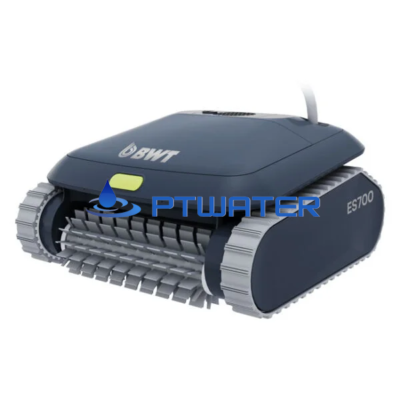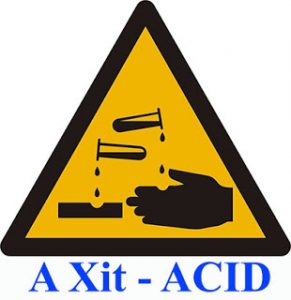



Acid wastes are commonly found in production lines of industries such as light industry, material industry and chemical industry. For example, wastewater from steel rolling technology, dye production plants, pesticides, pharmaceuticals contain sulfuric acid, hydrochloric acid, hydrochloric acid.

Wastewater contains strong acids such as hydrochloric acid (HCl), hydrochloric acid (HNO3) and their calcium salts, which are readily soluble in water.
Wastewater containing strong acids such as sulfuric acid (H2SO4), carbonic acid (H2CO3),
their calcium salts are insoluble in water.
– Wastewater contains weak acids such as acetic acid (CH3COOH).
The main method for treating acid-containing wastewater is neutralization. When neutralizing wastewater contains strong acids, their salts are difficult to dissolve in water and will be precipitated and deposited.
This method is one of the commonly used methods for treating acidic wastewater. Limestone can be considered as a buffer with chemical activity. Chemical reactions occur continuously when the pad is chemically active. The reaction occurs in the mind activation under reaction:
CaCO3 + H2SO4 → CaSO4 + H2CO3
Materials limestone exterior padding CaCO3 can also use magnesium carbonate
MgCO3 dolomite rocks etc ..
Calculation of limestone suitable and maintain Its activation depends on the factors.
– The amount of wastewater to be treated – The quality of waste water to be treated – The activation of the buffer – The size of the particles in the buffer
– Hydrodynamic mode in the neutralization tower.
Disadvantage: Reduction of
activation of the stone requires replacement with a new layer. Cycle of limestone depends on the amount and quality of wastewater to be treated.
If the wastewater has a high acid concentration or organic matter, foam formation will reduce the efficiency of the process.
Lime is commonly used to neutralize acidic wastewater in the form of powders such as CaCO3 calcium carbonate, magnesium carbonate magnesium MgCO3 lime powder or calcium lime calcium hydroxide Ca (OH) 2. This is a cheap and easy-to-neutral agent.
The reaction occurs with wastewater containing sulfuric acid: CaCO3 + H2SO4 → CaSO4 + H2CO3 – Q
or Ca (OH) 2 + H2SO4 → CaSO4 + 2H2O – Q
Use lime or lime milk is common phenomenon curing created As calcium hydroxide Ca (OH) 2 meets the air, it reacts with CO2 to form CaCO3, CaCO3 cures and reduces the flow and clogging of the pipeline.
According to Nelson, to neutralize wastewater containing sulfuric acid and hydrofluoric acid at a concentration of 1.5% using baked dolomite, its composition was 47.5% CaO, 34.3% MgO and 1.8% CaCO3. This stone has the advantage over other limestone types that retain very little residual sulfate and thus avoid sedimentation in the reactor.
The vibration of acid – containing wastewater with caustic soda or soda is fast and efficient. If the effluent contains carbonic acid and sulfuric acid, the reaction will be as follows:
2 NaOH + H2CO3 → Na2SO4 + 2H2O Na2CO3 + H2CO3 → 2NaHCO3
or NaOH → H2SO4 → NaHSO4 + NaOH → NaOH → Na2SO4 + H2O
Treatment of acidic wastewater Soda or caustic soda has the advantage:
Quick and effective treatment when waste water needs to be treated small. There is no need for an alkaline treatment device but only the necessary amount of water is added and mixed with wastewater at the suction head of the sewage pump. If the amount of water to be treated is large, one can react in a discrete or continuous manner in the reactor. Soda is contained in a separate tank and is fed to a batch reactor (intermittent) or continuous (continuous mode) by a multi-speed pump. Wastewater to be treated is fed into the reactor, in which the acid contained in wastewater reacts with the sodium to form salts and water.
The product of the reaction is largely soluble and does not increase the hardness of the receiving water.
Sodium and soda, however, are more expensive than other neutral agents such as lime, so this method is often used when suds and sodas are wastes of another technology.